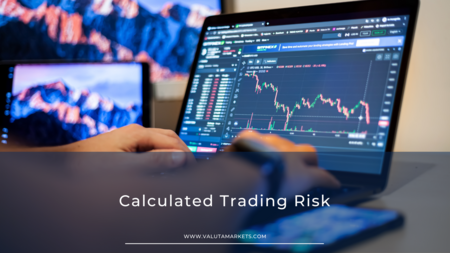Whenever you trade in the financial markets, there will constantly be some risk. Therefore, investors should calculate the level of risk as they calculate potential amounts of profits; before initiating any trade. The result of this is known as the risk/reward ratio. It calculates the difference between an entry point to the stop-loss and take-profit order.
Using these ratios, traders can assess the possibility of loss or profit for their trades. Three units of expected gain to two units of possible loss would be represented as a 2:3 ratio. The role of the ratio is to approximate the reward you might earn against the risk you are willing to invest, which is shown in price form.
For instance, a risk/reward ratio of 1:4 means that the investor is willing to risk $1 to possibly earn $5. That is the expected return. Calculating this ratio is essential in risk management, especially when trading in a volatile market where the risk prospects are much higher than possible earnings.
Risk and rewards in trading
There is a higher risk of losing money when trading in high-risk markets such as forex and commodities. The reason for this is that such markets are volatile and highly liquid. They are also shaped by several external and internal factors such as geopolitical climates and economic indicators. Other derivative products of financial markets like options, forwards, and futures are also risky, along with particular ETF and stock investments.
Moreover, some trading strategies are also riskier than others. Short-term approaches like day trading aim to generate frequent small profits thanks to price fluctuations via entering and exiting positions as fast as possible. Of course, these strategies can pay off when the trader succeeds, but the risk of losing significant amounts of capital is also high.
Key concepts and calculating risk
Before diving into calculating the risk/reward ratio, it is vital to grasp key concepts:
- Budget size: This is the amount of money an investor wants to invest.
- Entry price: The cost at which an investor buys into an asset.
- Reward size: Measured in percentages, it is the amount of money an investor is willing to relinquish in every losing trade.
- Position size: Refers to how much of an asset an investor is purchasing.
- Target price: The price point an investor is willing to leave their position at.
- Stop loss: It is an order form that automatically offloads your assets after you’ve lost trades.
Calculating the risk/reward ratio:
The first step in this calculation is to determine the risk and the reward. The trader is responsible for setting up both levels.
Risk refers to the total possible loss set by a stop-loss order. It is obtained by getting the difference between the trade’s entry point and stop-loss order.
Risk = Entry point – stop-loss order
A trade’s reward refers to the total possible profit set by a profit target. It is at this point that a security is sold. A reward is the entire amount a trader could gain from their trade. It is obtained by getting the difference between the profit target and the entry point.
Reward = Profit target – entry point
The risk/reward ratio refers to the relationship between these two obtained by dividing the risk by the reward.
Risk/Reward ratio = risk ÷ reward.
If the resulting ratio is greater than 1.0, the possible risk is higher than the possible reward of this trade. If it is less than 1.0, the possible profit is higher than the possible loss.
Factors that affect your trading risk
Understanding the risk of your trading positions and implementing practical tools to manage your risks are essential elements of trading in financial markets. Here is an overview of how some risk management tools function.
1. Stop-loss orders
A stop-loss order is attached to an open or a pending order. They come in different forms depending on the financial market and prevailing market conditions. Standard stop-loss orders close out open positions when the market trades are at the price level.
Another type, a trailing stop, enables the stop to move in present gains according to the current trading price only when the position moves positively. A stop-loss order can be revised when necessary but solely to a position that counters the trade.
2. Pip calculation
When a trader is trying to determine the amount of gain or loss per pip, they need to understand the size constituting this pip movement. Contract for differences (CFD) and Spread-betting have different calculation methods. The former’s calculations for the market are based on standardized contracts, while the latter prices each of them on a per-point basis.
Take away
Every investor worth their salt knows better than to rely on hope and luck. Being conservative about risk is always a better approach than being too aggressive with the rewards. The risk/reward ratio is calculated conservatively but realistically.

